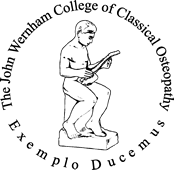Classical Osteopathy Bookshop Blog
Lectures of Dr. J.M. Littlejohn Volume I

The Littlejohn Lectures Volume I
The Littlejohn Lectures Volume I
John Wernham wrote in his introduction to The Littlejohn Lectures Volume I “The transcription from the lecture room to the printed page is difficult. Any attempt to reproduce the intimacy of the spoken word to the reader from the silent book can only result in a conglomerate of repetition and the most unfortunate juxtaposition of uncontrolled sentences and ‘asides’ that, to say the least, make for difficult reading. The only solution to this dilemma is one of compromise between a mere verbatim record and a total reconstruction with some omissions and with some alteration in presentation where the meaning is obscure. However, in spite of this daunting prospect every effort has been made to preserve the great truths that are enshrined in the old manuscripts and to restore, to some extent at least, the atmosphere of the earlier years of academic osteopathy, without creating an excess of fatigue for the modern student.
The Littlejohn Lectures Volume I edited by John Wernham, begins with the subject Osteopathy in General. John Wernham writes “The first question is “What is Osteopathy? Osteopathy is a system of therapeutics based on the theory that many diseases are due to pressure on the vessels, or nerves, by some displaced vertebrae, or some other part of the skeleton, or to a condition of imbalance in the muscles moving around the joint. The treatment is directed to the mechanical correction, by means of manipulation of the osseous displacement, or muscular imbalance, with a consequent repression of abnormal reflexes, and a restoration to normal of the circulation and the nerve impulses.”
John Wernham further writes “The method of treatment is based on the principle of adjustment. This is the key to our theory because all adjusted structures contribute their quota to general vital force underlying the correlated activities of the body, the constitutional vitality being the sum total of these correlated activities, and it is when this power fails that we are called in to help restore the vital force to its normal position. That is to say, the tendency to the normal is the underlying physiological force of the body. If, and when, lack of adjustment exists within the organism, or its environment, it is our place to recover the lost vital control and assist nature in the return to the normal.”
This publication is available to order from our Online Bookshop:
http://www.johnwernhamclassicalosteopathy.com/product/the-littlejohn-lectures-volume-1/
To read more of “The Littlejohn Lectures Volume I” you can purchase a copy from the JWCCO Bookshop for £30 here: http://www.johnwernhamclassicalosteopathy.com/product/the-littlejohn-lectures-volume-1/
Classical Osteopathy Bookshop Blog
– Latest Articles –
Lectures of Dr. J.M. Littlejohn Volume I
As 2017 ends, we remember that this year saw the 150th Anniversary of Dr. John Martin Littlejohn’s birth and the 70th Anniversary of his death. Featured today is The Littlejohn Lectures Volume I. John Wernham introduces the publication writing “The lectures are reproduced as they were given between 1930 and 1934, a period which may be most properly regarded as the apotheosis of a life devoted to learning, to research and to the development of osteopathic philosophy and practice. In these lecture-notes we have bequeathed to us a coverage of osteopathic investigation into the problems of health and disease that is profound, erudite and unique in content and presentation.” The Littlejohn Lectures Volume I is the first of a series each constituting a contribution to writings on Classical Osteopathy.
Classical Osteopathy
John Wernham’s book entitled Classical Osteopathy is the core textbook for students of Classical Osteopathy. John Wernham was famously remembered for commenting whilst lecturing at the age of 99 that he was “still a student of Classical Osteopathy”. In a lecture to Osteopaths T. E. Hall discusses The Knee Joint: “We, you and I, know that while we are called upon to deal with many hundreds of cases of knee disablement, discomfort and pain, only a very small percentage of them can be classified as a definite displaced meniscus.
The Body Adjustment
……..You have heard eminent physicians say to a patient who comes to them with bad eyes, that they cannot cure his eyes by themselves, but that if his eyes are to be cured, his head must be treated; and then again they say that to think of curing the head alone, and not the rest of the body also, is the height of folly. And arguing in this way they apply their methods to the whole body, and try to treat and heal the whole and the part together. And this is the reason why the cure of many diseases is unknown to the physicians of Hellas, became they are ignorant of the whole, which ought to be studied also; for the part can never be well unless the whole is well. SOCRATES TO PLATO

